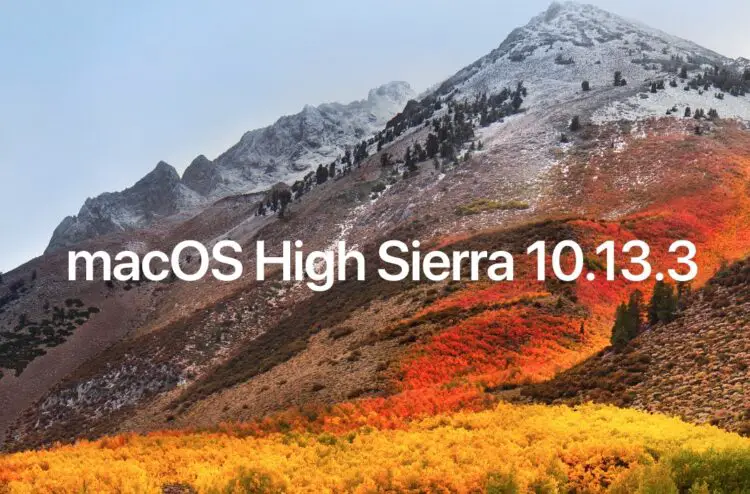
- Apple os high sierra install#
- Apple os high sierra update#
- Apple os high sierra upgrade#
- Apple os high sierra software#
- Apple os high sierra download#
Apple os high sierra update#
If you are currently running 10.14.0, you'll need to proceed with the 10.14.1 update method described below.

This process is detailed in steps 8 - 10 above. Once the update is installed, you will most likely need to re-apply post-install patches to get the system to boot again.
Apple os high sierra software#
If you are currently running 10.14.1 or 10.14.2, you can simply use the Software Update pane of System Preferences (if using APFS) to apply the 10.14.3 update. Then, update to 10.14.4, either by installing via Software Update, or by just using the installer volume you've created to install.
Apple os high sierra install#
If you install a software update and the system fails to boot afterwards, this is what needs to be done.ġ0.14.6 can be updated normally via Software Update if using an APFS volume, and will need to be patched using an installer volume created with Mojave Patcher version 1.3.2 or later after installing.ġ0.14.5 can be updated normally via Software Update if using an APFS volume, and will need to be patched using an installer volume created with Mojave Patcher version 1.3.1 or later after installing.ġ0.14.4 adds new changes that ARE NOT patchable by the post-install tool of Mojave Patcher v1.2.3 and older! Before updating to 10.14.4, you you will need to use the latest Mojave Patcher version to create a new installer volume, using the 10.14.4 installer app. After applying ANY system update via Software Update, re-applying post-install patches using your Mojave Patcher installer volume will most likely be necessary.If you are not using APFS, you can follow the 10.14.1 installation steps below. If you choose to continue using macOS Extended (Journaled) as your filesystem type, you will NOT receive System Updates via System Preferences. Using APFS is REQUIRED in Mojave in order to receive system updates via the normal Software Update method.The link itself gives the answer macOS Sierra Patcher Tool for Unsupported Macs Since it’s unsupported, it’s by definition, riskier than install Sierra on supported Macs.
Apple os high sierra download#
The “macOS High Sierra Patcher” application is intended for those with unsupported Macs and Hackintosh users, but any Mac user can use the app to be able to download the complete installer file from Apple servers. As a result, SCSCF will stop providing software support for all computers running macOS 10.14 Mojave in late 2021.Mac Os High Sierra Patcher Tool For Unsupported Macs Posted on by admin. With Apple's release of macOS 11 Big Sur in late 2020, Mojave will be the third oldest version and will cease to be supported at that time.
Apple os high sierra upgrade#
Please Note: If you choose not to upgrade your High Sierra computer, it will not receive security patches or functionality updates, and our ability to troubleshoot issues will be limited as of February 1, 2021.


 0 kommentar(er)
0 kommentar(er)
